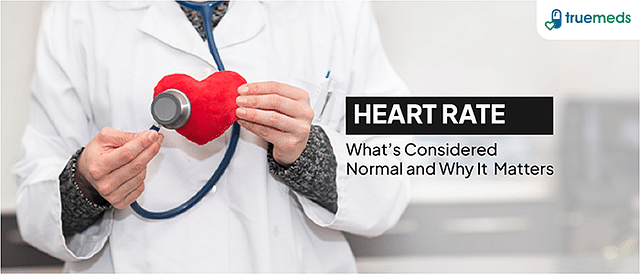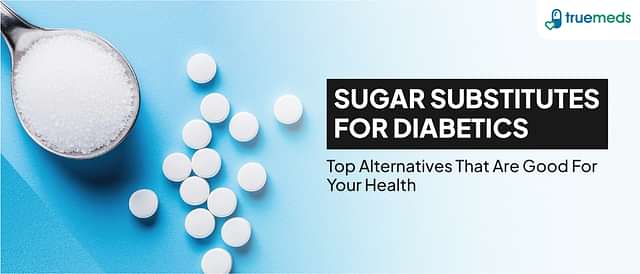Pericardial Disease
Pericardial disease refers to conditions that affect the pericardium, a thin, fibroelastic sac surrounding the heart. Common types of pericardial disease include pericarditis, pericardial effusion, constrictive pericarditis, cardiac tamponade, and fibrosis of the pericardium. Pericardial disease can progress through various stages, from acute to chronic and may require prompt medical attention.
Last updated on : 16 Jul, 2025
Read time : 13 mins

Overview of Disease
Pericardial disease encompasses a range of conditions that impact the pericardium, the thin, fibroelastic sac that envelops the heart and separates it from the surrounding mediastinal structures. The pericardium plays crucial roles in maintaining the heart's position within the chest, acting as a barrier against infection and inflammation, and lubricating the heart to minimise friction. Understanding the various types and stages of pericardial disease is essential for early detection and appropriate management.
What is Pericardial Disease?
Pericardial disease refers to any disorder or condition that affects the pericardium, the protective sac surrounding the heart. The pericardium consists of two layers: an outer fibrous layer and an inner serous layer. Between these layers is a small amount of fluid that lubricates the heart's surface, allowing it to move smoothly within the chest cavity. When the pericardium becomes inflamed, infected, or filled with excess fluid, it can lead to various forms of pericardial disease, each with its own set of symptoms and potential complications. Recognising the signs and symptoms of pericardial disease is crucial for prompt diagnosis and treatment.
Key Factors about Pericardial Disease
| Category | Details |
| Also Referred as | Pericarditis |
| Commonly Occurs In | Men, People assigned male at birth, Ages 16-65 |
| Affected Organ | Pericardium (the sac surrounding the heart) |
| Type | Acute, Recurrent, Chronic, Pericardial Effusion, Cardiac Tamponade, Constrictive Pericarditis |
| Common Signs | Chest pain (sharp, centred, radiating to neck and shoulder), Low-grade fever, Increased heart rate, Tiredness, Shortness of breath, Coughing |
| Consulting Specialist | Cardiologist, Cardiothoracic Surgeon, Rheumatologist, Interventional Cardiologist, Cardiac Imaging Specialist |
| Treatement Procedures | Pain relievers (NSAIDs), Colchicine, Corticosteroids, Antibiotics, Pericardiocentesis, Pericardiectomy (surgery) |
| Managed By | Pain relievers (NSAIDs), Colchicine, Corticosteroids, Antibiotics |
| Mimiciking Condition | Myocarditis, Heart Attack |
Types of Pericardial Disease
There are several types of pericardial disease, each with its own unique features and causes. These include:
Pericarditis: An inflammation of the pericardium, which can be acute, subacute, or chronic. It is often caused by viral infections but can also result from bacterial infections, autoimmune disorders, cancer, or chest injury.
Pericardial effusion: An accumulation of excess fluid within the pericardial space, which can lead to cardiac tamponade, a life-threatening condition where the fluid compresses the heart and impairs its function.
Constrictive pericarditis: A rare condition where the pericardium becomes thickened and fibrotic, causing the layers to stick together and restrict the heart's movement. It can result from chronic inflammation, infection, or cancer.
Pericardial fibrosis: Thickening and scarring of the pericardium, which can occur after pericarditis or as a result of systemic diseases such as rheumatoid arthritis.
Cardiac tamponade: A life-threatening condition where the pericardial effusion compresses the heart, preventing it from pumping enough blood to the rest of the body.
Early Signs of Pericardial Disease
The early signs of pericardial disease include:
Sudden chest pain, especially if it improves with sitting up and leaning forward
Shortness of breath, particularly when lying down
Rapid or irregular heart rhythms
Fever, if associated with an infection
Pericardial rub, a rubbing or creaking sound heard with a stethoscope, indicative of pericarditis
Symptoms of Pericardial Disease
The symptoms of pericardial disease can vary depending on the specific condition, but some common signs include:
Chest pain: This is often sharp, stabbing, or dull and may radiate to the back, neck, or shoulders. The pain typically worsens with deep breathing, coughing, or lying down and improves when sitting up and leaning forward.
Shortness of breath: Patients may experience difficulty breathing, especially when lying down, due to the heart's inability to fill and pump blood efficiently.
Fatigue and weakness: A general feeling of tiredness and weakness can occur due to reduced cardiac output.
Swelling: Fluid buildup (oedema) can cause swelling in the legs, ankles, feet, and even the abdomen.
Heart palpitations: Irregular or fast heartbeats may be a sign of pericardial effusion or cardiac tamponade.
Fever: A low-grade fever may be present, particularly if the condition is caused by an infection.
Cough and hiccups: Pressure on surrounding tissues or nerves can cause coughing, hiccups, or hoarseness.
Stages of Pericardial Disease
Pericardial disease can progress through several stages, each with its own set of symptoms and potential complications. These include:
Acute stage: A sudden onset of inflammation, which can be caused by a viral infection, trauma, or other factors. Acute pericarditis is often accompanied by severe chest pain, fever, and a pericardial friction rub.
Subacute stage: A gradual onset of inflammation, which can occur weeks or months after the initial triggering event. Subacute pericarditis may present with milder symptoms compared to acute pericarditis.
Chronic stage: A persistent inflammation that lasts longer than 6 months, often leading to scarring and thickening of the pericardium. Chronic pericarditis can result in constrictive pericarditis, which restricts the heart's ability to fill with blood properly.
Constrictive stage: Advanced pericardial disease marked by thickening and scarring of the pericardium, leading to restricted heart filling and pumping. This stage may require surgical intervention to restore cardiac function.
Causes of Pericardial Disease
Pericardial disease can have various causes, including:
Idiopathic: In up to 90% of cases, the cause is unknown.
Infections: Viral, bacterial (e.g., tuberculosis), fungal, or parasitic infections can lead to pericardial disease.
Inflammatory conditions: Autoimmune diseases such as lupus and rheumatoid arthritis can cause pericardial inflammation.
Trauma: Direct injury to the chest or heart can result in pericardial disease.
Surgical complications: Pericardial disease may occur after cardiac surgery or procedures like electrophysiology studies or cardiac catheterisation.
Metabolic disorders: Conditions like uraemia, hypothyroidism, and some cancers can affect the pericardium.
Medications: Certain medicines, such as hydralazine, procainamide, and phenytoin, can cause pericardial inflammation as a side effect.
Radiation therapy: Radiation treatment for cancers in the chest area can lead to pericardial disease.
Complications
Pericardial diseases can lead to several serious complications, some of which can be life-threatening if not promptly addressed. These include:
Cardiac tamponade: This occurs when fluid accumulates within the pericardial space, compressing the heart and preventing it from filling properly. This can lead to decreased cardiac output, low blood pressure, and potentially fatal outcomes if not treated immediately. Symptoms include shortness of breath, chest pain, lightheadedness, and fainting.
Constrictive pericarditis: This condition is characterised by thickening and scarring of the pericardium, leading to a rigid sac that restricts the heart's ability to expand and fill with blood. Symptoms may include dyspnoea, fatigue, swelling in the abdomen and legs, and poor circulation.
Heart failure: Untreated pericardial effusion can lead to heart failure due to increased pressure on the heart, impairing its ability to pump blood effectively.
Recurrent pericarditis: Some patients may experience recurrent episodes of pericarditis, which can be challenging to manage and may require ongoing treatment and monitoring.
Prevention of Pericardial Disease
Preventing pericardial disease can be challenging because many causes are either idiopathic or result from other underlying conditions. However, some preventive measures can be taken to reduce the risk of developing this condition:
Infection control: Preventing viral and bacterial infections through vaccination and proper hygiene can reduce the incidence of pericarditis.
Management of underlying conditions: Effective management of systemic illnesses such as autoimmune diseases, cancer, and renal failure can help prevent pericardial complications.
Avoiding chest trauma: Minimising the risk of chest trauma through safe practices can prevent traumatic pericarditis.
Reducing radiation exposure: Limiting exposure to radiation, especially in the context of cancer treatment, can help mitigate the risk of radiation-induced pericarditis.
Medication management: Avoiding or carefully managing medications known to cause pericardial disease can also help prevent some cases.
Diagnosis & Tests
Diagnosing pericardial diseases involves a combination of clinical evaluation, laboratory tests, and imaging studies. These include:
Physical examination: A doctor will assess the patient's symptoms, medical history, and perform a physical exam, listening for specific heart sounds (such as a pericardial rub) that may indicate pericardial inflammation.
Electrocardiogram (ECG): An ECG can detect changes in the heart's electrical activity that suggest pericardial inflammation or effusion.
Echocardiogram: This ultrasound of the heart can visualise the pericardium, detect fluid accumulation (pericardial effusion), and assess the heart's function.
Chest X-ray: A chest X-ray can show an enlarged heart silhouette, suggesting the presence of a pericardial effusion.
Imaging tests: Computed tomography (CT) and magnetic resonance imaging (MRI) are some of the advanced imaging techniques that provide detailed images of the heart and pericardium, and help identify pericardial thickening, inflammation, or effusion.
Blood tests: Laboratory tests can help identify signs of inflammation, infection, or underlying conditions that may cause pericardial disease, such as autoimmune disorders or renal failure.
Pericardiocentesis: In some cases, a sample of pericardial fluid may be obtained through a needle to analyse its composition and identify the underlying cause of the pericardial effusion.
Treatment & Management
The treatment of pericardial disease aims to relieve symptoms, prevent complications, and improve heart function where applicable. Here are the treatment options:
1. Nonsteroidal Anti-Inflammatory Drugs (NSAIDs)
NSAIDs are typically the first-line treatment for relieving chest pain and inflammation caused by acute pericarditis.
Commonly used NSAIDs include:
- Ibuprofen: It reduces pericardial inflammation and provides relief from acute chest discomfort.
- Indomethacin: It is a potent anti-inflammatory agent used to manage moderate to severe pericarditis-related pain.
2. Anti-Inflammatory Alkaloids
Colchicine is commonly added to prevent recurrent pericarditis and improve treatment response.
- Colchicine: It modulates the inflammatory process in the pericardial sac, reducing both acute symptoms and long-term recurrence risk.
3. Corticosteroids
These are used in patients who do not respond to NSAIDs or colchicine, or when those medications are contraindicated.
Examples include:
- Methylprednisolone: It provides rapid control of severe pericardial inflammation.
- Hydrocortisone: It is used intravenously in acute settings to reduce pericardial swelling.
- Dexamethasone: It is a long-acting corticosteroid that offers sustained relief in resistant pericardial inflammation.
4. Pericardiocentesis
A life-saving intervention, this procedure involves draining fluid from the pericardial sac, especially in cases of cardiac tamponade.
- Pericardiocentesis: Guided by imaging, it alleviates pressure on the heart and may include catheter placement to prevent fluid reaccumulation.
5. Pericardial Window
This surgical approach is used when recurrent fluid buildup does not respond to conservative treatment.
- Pericardial Window: A portion of the pericardium is removed to allow fluid to drain into the chest cavity, reducing the need for repeat procedures.
6. Pericardiectomy
It more invasive surgical treatment, reserved for constrictive or recurrent pericarditis not responsive to medical therapy. It involves the complete or partial removal of the stiffened pericardium to relieve chronic constriction and restore regular cardiac filling.
Living with Disease
Living with pericardial disease may require some lifestyle adjustments to manage symptoms and prevent complications. Here are some tips:
Limit strenuous activities until symptoms have resolved and inflammatory markers have normalised.
Attend follow-up appointments with your cardiologist to monitor your condition and adjust treatment as needed.
Take medications as prescribed and report any side effects to your doctor.
Maintain a healthy diet and manage your weight to reduce strain on your heart.
Practice stress-reduction techniques, such as deep breathing, meditation, or gentle yoga, to promote relaxation and emotional well-being.
Seek support from family, friends, or support groups to help cope with the emotional aspects of living with a chronic condition.
When to See a Doctor?
If you experience symptoms that may indicate pericardial disease, such as chest pain, shortness of breath, or a rapid heartbeat, it's crucial to seek medical attention promptly. These symptoms can also be signs of other serious heart conditions, so a proper evaluation by a doctor is necessary.
Additionally, if you have been diagnosed with pericardial disease and experience worsening symptoms, new symptoms, or side effects from medications, contact your doctor immediately. Regular follow-up appointments are essential to monitor your condition and make any necessary adjustments to your treatment plan.
Key Takeaways
Pericardial disease is a group of conditions that affect the pericardium, the protective sac surrounding the heart.
Common types of pericardial disease include pericarditis, pericardial effusion, and constrictive pericarditis.
Symptoms of pericardial disease may include chest pain, shortness of breath, and a rapid heartbeat.
Treatment for pericardial disease depends on the specific condition and its severity, and may include medications, procedures, or surgery.
Living with pericardial disease may require limiting strenuous activities, regular monitoring, and lifestyle adjustments.
If you experience symptoms of pericardial disease or have been diagnosed with the condition, it is essential to work closely with your doctor for proper management and follow-up.
FAQs
What is pericardial disease?
Pericardial disease refers to conditions affecting the thin, two-layered sac (pericardium) surrounding the heart, which provides lubrication and protection and maintains the heart's position.
What is the treatment for pericardial disease?
Treatment for pericardial disease depends on the specific condition and may include rest, anti-inflammatory medications (NSAIDs or colchicine), corticosteroids, or procedures like pericardiocentesis to drain excess fluid.
What is the surgery for pericardial disease?
Surgical interventions for pericardial disease include pericardiocentesis, pericardial window (creating an opening to drain fluid), and pericardiectomy (removing part or all of the pericardium).
How to prevent pericardial disease?
Preventing pericardial disease involves managing underlying conditions, such as autoimmune disorders or infections, and maintaining a healthy lifestyle through regular exercise, a balanced diet, and stress management.
What causes pericardial disease?
Pericardial disease can be caused by viral or bacterial infections, autoimmune disorders, metabolic disorders, trauma, heart surgery, or certain medications. In some cases, the cause remains unknown (idiopathic).
What medication is used for pericardial disease?
Medications for pericardial disease include NSAIDs (ibuprofen, aspirin) for pain relief, colchicine for recurrent cases, glucocorticoids for severe inflammation, and antibiotics for infections causing pericarditis.
What is an example of a pericardial disease?
An example of a pericardial disease is acute pericarditis, which is an inflammation of the pericardium characterised by chest pain, pericardial friction rub, ECG changes, and sometimes pericardial effusion.
References
Adler, Y., Charron, P., Imazio, M., Badano, L., Barón-Esquivias, G., Bogaert, J., Brucato, A., Gueret, P., Klingel, K., Lionis, C., Maisch, B., Mayosi, B., Pavie, A., Ristić, A. D., Sabaté Tenas, M., Seferovic, P., Swedberg, K., Tomkowski, W., Achenbach, S., . . . ESC Scientific Document Group. (2015). 2015 ESC Guidelines for the diagnosis and management of pericardial diseases: The Task Force for the Diagnosis and Management of Pericardial Diseases of the European Society of Cardiology (ESC) Endorsed by: The European Association for Cardio-Thoracic Surgery (EACTS). European Heart Journal, 36(42), 2921–2964. https://doi.org/10.1093/eurheartj/ehv318
Imazio, M., & Adler, Y. (2013). Management of pericardial effusion. European Heart Journal, 34(16), 1186–1197. https://doi.org/10.1093/eurheartj/ehs372
Klein, A. L., Abbara, S., Agler, D. A., Appleton, C. P., Asher, C. R., Hoit, B., Hung, J., Garcia, M. J., Kronzon, I., Oh, J. K., Rodriguez, E. R., Schaff, H. V., Schoenhagen, P., Tan, C. D., & White, R. D. (2013). American Society of Echocardiography clinical recommendations for multimodality cardiovascular imaging of patients with pericardial disease: endorsed by the Society for Cardiovascular Magnetic Resonance and Society of Cardiovascular Computed Tomography. Journal of the American Society of Echocardiography, 26(9), 965–1012.e15. https://doi.org/10.1016/j.echo.2013.06.023
Browse Other Conditions
Latest health articles
Top Health Essentials
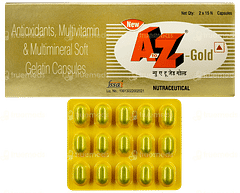



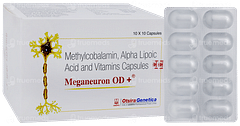









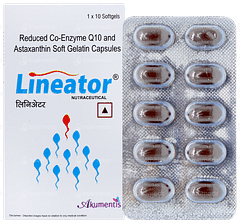


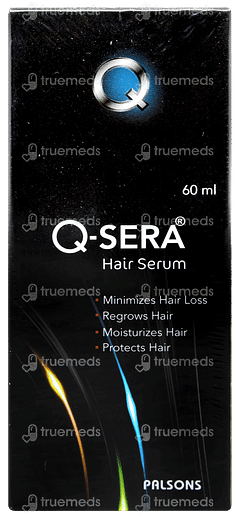


Disclaimer
Top-Selling Medicines:
...View more
Top-OTC medicines:
...View more
Company
About UsHealth ArticleHealth StoriesDiseases & Health ConditionsAyurvedaAll MedicinesAll BrandsNeed HelpFAQSubscribe
Registered Office Address
Grievance Officer
Download Truemeds
Contact Us
Our customer representative team is available 7 days a week from 9 am - 9 pm.
v4.4.1
2025 - Truemeds | All rights reserved. Our content is for informational purposes only. See additional information.
Our Payment Partners









